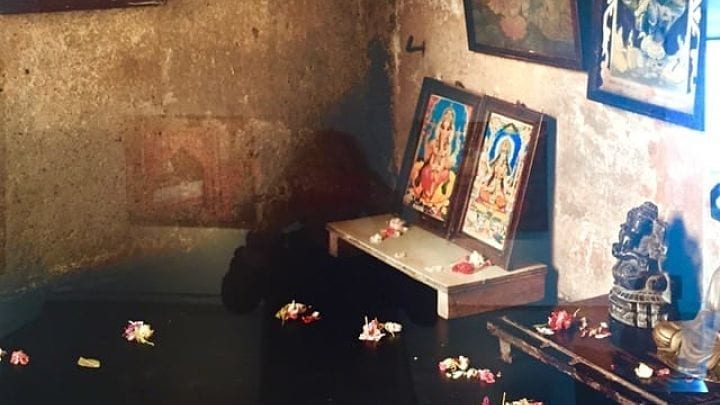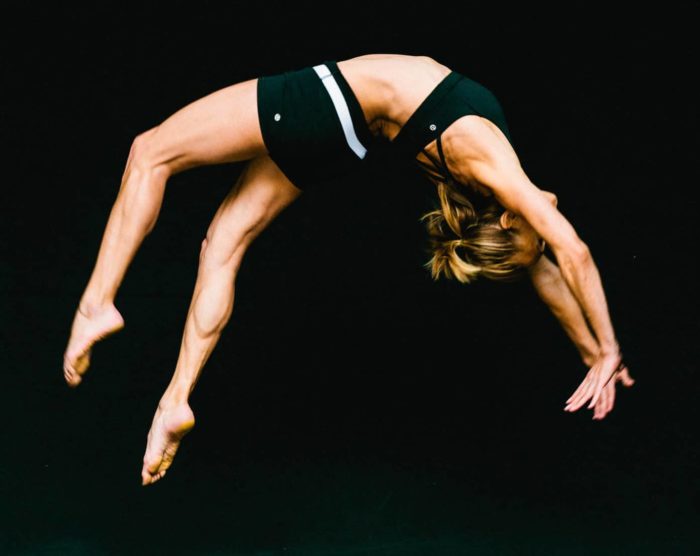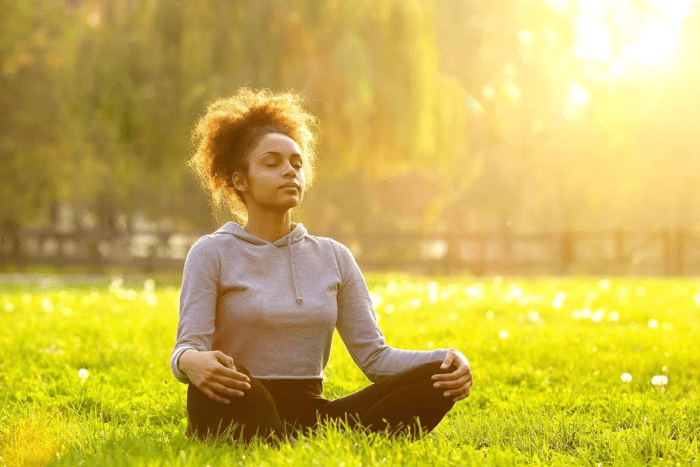
What are personal rituals?
Personal rituals can take many forms, from simple to elaborate, spiritual to mundane. They don’t have to be fancy or take too long. They only need to be done regularly, full of meaning, and have set intentions.
How to make a ritual?
In every ritual, the steps involved are very much the same: geometry, structure, rhythm, and intent.
Use these steps as ideas and suggestions for how to make your own personal ritual. Then, whatever you choose to do, do it simply.
Step 1—Geometry
Set symbolic elements before you, such as a candle, a picture, incense, a religious icon, a vase of flowers, an altar, and situate yourself in a certain relationship to these things. Define your sacred space, the physical space where you begin your ritual.
Feel free to add quiet, soothing music or turn down the lights. Create your own special environment where you can share your deepest intentions.
Many people create altars or small shrines for their meditations or prayers. Make one in your office, at home, in your car, or in a small section of your yard. Having an altar is a way to pack emotional faith into your everyday life. Personal altars tell as story, from the gifts to the photos to the beads. Yet, it’s not the objects that are important, but the faith in these objects that make them emotionally sacred.
Step 2—Structure
Give your ritual a beginning and an ending. Carefully arrange these steps to create the body of your ritual.
You might try starting your day with a simple ritual before you begin work—sit at your desk, close your eyes, and lengthen your breath. Do this for 10 or 12 breaths, increasing the length of your breath as you go along. Pause at the end, come back to easy breathing, and stay in that silence. Then repeat a silent intention for clarity and purpose, wait for a moment, and open your eyes. By the time you’ve finished, you will be calm, clear, and focused.
Step 3—Rhythm
The progressive sequence of events, actions, thoughts, or prayers leads you into ritual itself. It also takes you back out of it, letting you resume your normal life. Some rituals start with a silent prayer or a simple motion. Some include offerings, such as flowers or food.
In India, preparing for a ritual is as important as the ritual itself. You bathe first, and are freshly dressed. Entering the shrine room, you bow or kneel, and face the objects of meditation, then you perform the ceremony. Chants are sung, a bell is rung. You meditate to internalize the effects. These are the rhythms of ritual.
Step 4—Intent
What is the purpose of tradition and ritual in people’s lives?
The purpose behind your ritual directs your ritual fulfillment. What emotional quality do you want to focus on right now? The possibilities are numerous: opening your heart, grounding, connecting to someone or something, completion, healing, asking for help, gratitude, praise, a blessing, purification, self-reflection, linking with a higher power.
The power of ritual isn’t mindless movement. It’s a focusing technique to systematically give you an anchor point within.

Discover the many ways Yoga Therapy can be applied to health care, education, in industry settings, communities and organizations.
Pilgrimage as Ritual
While there are many forms of travel—sightseeing, education, pleasure, entertainment—the one that responds to a genuine longing for the sacred is the spirit-renewing ritual of a pilgrimage. In The Art of Pilgrimage, author Phil Cousineau describes pilgrimage as “a transformative journey to a sacred center,” one that calls for travel to “a holy site associated with gods, saints, or heroes, or to a natural setting imbued with spiritual power.” Simply put, pilgrimage is any journey we take with the purpose of finding something that deeply matters.
Used as personal ritual, pilgrimage is a way to prove your faith, to find the answers to your deepest questions, or to provide the healing power of hope. It forces you to ask yourself what you believe in strongly and lends direction to your life.
Here are some steps to consider for a pilgrimage:
- Prepare: deliberately set your direction—a place, an intention, a process. Have interests, desire, passion, and commitment to your process.
- Give attention to yourself and to your path. Take your time, seriously, elegantly. Be open to details, the nuances of you surroundings. If you start to look around, you will start to see everything as an outward, visible sign of an inward grace.
- Find some exclusive time to be alone during your pilgrimage.
- Direct your mind toward an intention, and hold that intention throughout your journey.
- Have faith and move forward to where you want to go.
- Respect your destination.
- Reflect: connect to a specific sense of how you are feeling, your emotional response about the place, the process, the quality of your journey. After your pilgrimage, find a sense of continuity carrying over into your everyday life. Recall your story. Write it down. Chronicle your experience.
“True pilgrimage changes lives, whether we go halfway around the world or out to our own backyards.”
-Martin Palmer, author
Listen to and watch intensely everything around you on your journey and you’ll reconnect with something deep inside. Whether it’s setting off on an arduous trip to a sacred site of worship, returning to the place of your birth, or taking the first step in a grand, creative project, your pilgrimage will change you deeply.

Get cutting-edge info on the latest wellness trends.
Sign up for Bija’s monthly newsletter.
